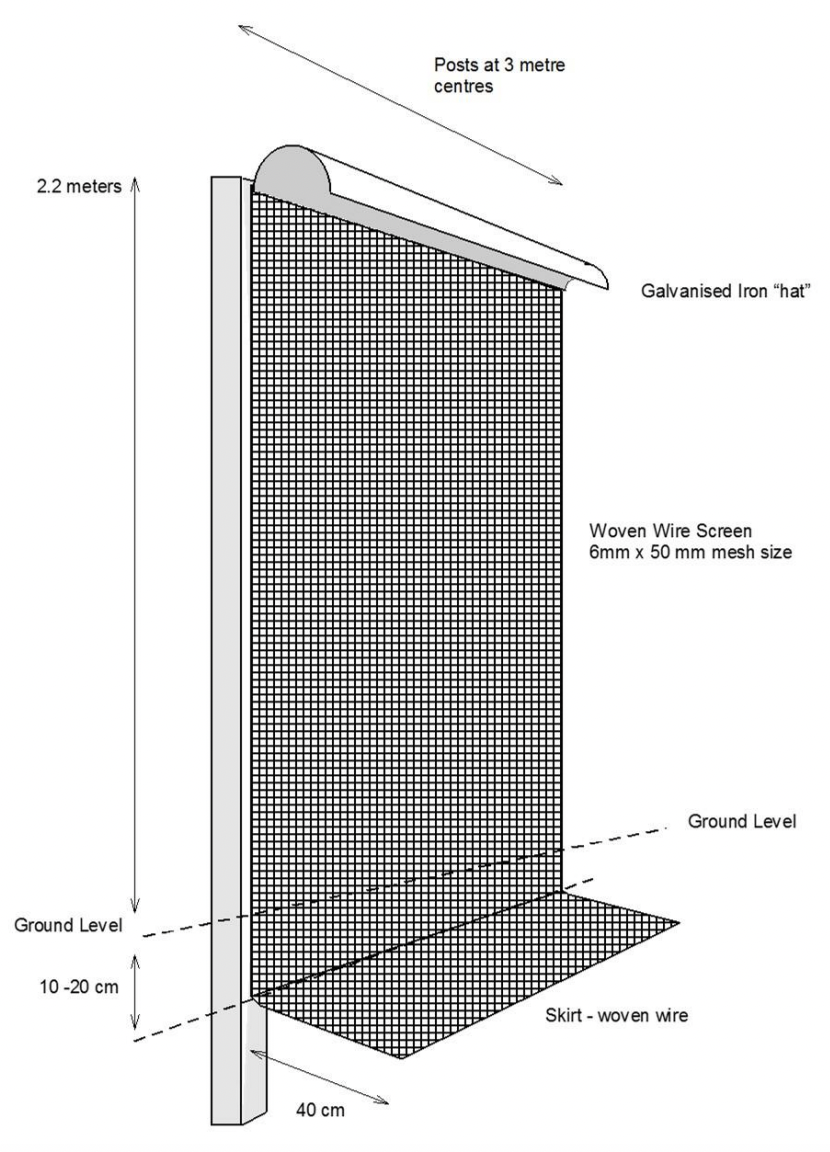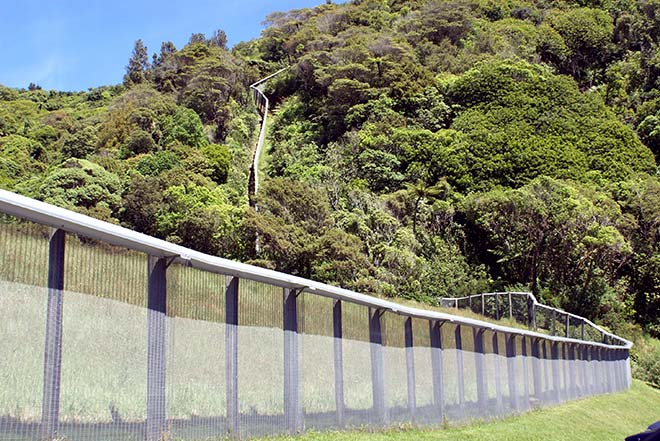IB Syllabus focus:
‘Protect species by conserving habitats via protected wild areas or active management. Examples include pest-exclusion fenced ecosanctuaries; consider surrounding land use and distance from urban centres.’
Habitat conservation and ecosanctuaries are vital for maintaining biodiversity by protecting ecosystems from human pressures, invasive species, and ecological decline, ensuring long-term species survival and ecosystem resilience.
The Importance of Habitat Conservation
Habitats provide the resources and conditions that species require to survive, reproduce, and interact. When habitats are destroyed or degraded, species populations decline, leading to biodiversity loss. Habitat conservation therefore focuses on protecting entire ecosystems rather than single species, ensuring that ecological processes such as nutrient cycling, pollination, and predator–prey dynamics continue to function.
Key Reasons for Habitat Conservation
Preserving biodiversity at genetic, species, and ecosystem levels.
Maintaining ecosystem services, such as water purification, climate regulation, and soil fertility.
Supporting human needs, including food, medicine, and cultural values tied to natural landscapes.
Reducing extinction risk, particularly for species with small ranges or specialised ecological niches.
Ecosanctuaries as a Conservation Strategy
An ecosanctuary is a designated protected area where human activity is minimised and ecological integrity is actively managed. Unlike passive protection, ecosanctuaries often involve fencing, pest control, and ecological restoration.
Ecosanctuary: A protected and managed area, often enclosed, designed to restore and conserve species and ecological processes by excluding threats such as invasive species.
Core Features of Ecosanctuaries
Fenced perimeters: Prevent invasive predators or pests from entering.
Intensive management: Includes habitat restoration, reintroduction of native species, and ongoing monitoring.
Community involvement: Local people may help in species monitoring or ecological restoration.
Education and research opportunities: Ecosanctuaries often function as living laboratories for conservation science.
Protected Wild Areas and Active Management
Habitat conservation can occur through protected wild areas, such as national parks, reserves, and biosphere reserves, or through active management strategies.
Protected Wild Areas
Aim to maintain habitats in as natural a state as possible.
Often prohibit activities such as logging, mining, or large-scale agriculture.
Examples include national parks, nature reserves, and World Heritage Sites.
Active Management Measures
Pest eradication (removing invasive species such as rats, goats, or rabbits).
Fire management to maintain ecological balance in fire-adapted ecosystems.
Habitat restoration, including replanting native species and controlling erosion.
Species reintroductions, particularly of keystone or endangered species.
Examples of Ecosanctuaries
Pest-exclusion fenced reserves in New Zealand, such as Zealandia, where invasive mammals are excluded to protect native birds.
Island ecosanctuaries where strict quarantine and invasive species removal allow unique species to survive.
Urban-edge ecosanctuaries providing biodiversity refuges close to cities, but requiring careful consideration of human–wildlife interaction.
Examples include pest-exclusion fenced ecosanctuaries; consider surrounding land use and distance from urban centres.

Cross-section of a predator-proof fence showing the overhanging hood that deters climbers, the fine woven-mesh wall, and the buried outward-projecting skirt that blocks burrowers. Dimensions are indicated to illustrate specifications typically used in New Zealand ecosanctuaries. The image focuses on engineering features discussed in this subsubtopic. Source.
Spatial Considerations in Habitat Conservation
Conservation effectiveness depends on where and how protected areas are established. Poorly located reserves may fail to protect critical ecosystems or become isolated.
Key Spatial Factors
Surrounding land use: Agricultural or urban land near reserves may introduce pollutants, pests, or habitat fragmentation.
Distance from urban centres: Proximity increases risks of disturbance but also raises public awareness and education opportunities.
Connectivity: Ecological corridors can link isolated sanctuaries, allowing species movement and genetic flow.
Size and shape: Larger, compact reserves are more effective at supporting viable populations and minimising edge effects.
Edge Effects and Reserve Management
Edge effects occur at habitat boundaries where ecological conditions differ from the core environment. This can increase exposure to predators, invasive species, or pollutants.
Edge Effect: The changes in population or community structures that occur at the boundary of two habitats, often leading to increased vulnerability of species.
Management strategies such as buffer zones, transitional zones, and effective fencing help reduce these risks.
Active management in fenced ecosanctuaries focuses on maintaining barrier integrity and access points to keep predators out while supporting native species recovery.

Predator-proof perimeter fence at Zealandia (Wellington), showing the overhanging hood and fine mesh that exclude climbing and small mammalian predators. This urban example illustrates how ecosanctuaries can be embedded near cities when design and maintenance are rigorous. The source page also mentions inspection frequency; this operational detail is additional context beyond the syllabus. Source.
Human and Ecological Dimensions of Ecosanctuaries
Habitat conservation is not only ecological but also social and political. Local communities often determine the success of conservation initiatives.
Human Dimensions
Legislation and policy establish legal protection for ecosanctuaries.
Funding from governments, NGOs, and ecotourism ensures sustainability.
Education and awareness foster local support and reduce illegal activities.
Ecological Dimensions
Protects keystone species whose roles stabilise ecosystems.
Preserves ecological interactions, preventing ecosystem collapse.
Allows natural processes (succession, predation, dispersal) to function with minimal interference.
Conservation Outcomes of Ecosanctuaries
Well-managed ecosanctuaries deliver measurable ecological benefits:
Species recovery: Populations of endangered or endemic species stabilise or increase.
Ecosystem regeneration: Restored vegetation improves soil fertility, hydrology, and carbon storage.
Enhanced resilience: Biodiversity supports adaptation to climate change and other disturbances.
By integrating protected wild areas with active management, ecosanctuaries ensure species survival and habitat restoration, balancing ecological protection with community engagement.
FAQ
Ecosanctuaries typically involve more intensive management compared to national parks. They often use predator-proof fencing, pest eradication, and targeted species reintroduction.
National parks usually rely on broader landscape-scale protection with limited direct intervention, while ecosanctuaries are smaller-scale, controlled environments designed to restore specific ecological conditions.
Predator-proof fences require constant monitoring and maintenance to remain effective.
Weather events can damage fences and allow pest incursions.
Vegetation growth may compromise fence integrity if not regularly cleared.
Human error, such as leaving access gates open, poses ongoing risks.
Ecosanctuaries provide controlled conditions where scientists can study species recovery, predator–prey dynamics, and habitat restoration.
They offer opportunities to test reintroduction techniques, monitor long-term ecosystem change, and involve students and local communities in citizen science projects.
Ecosanctuaries act as preventative tools by safeguarding species before they reach critical levels of decline.
They protect genetic diversity in stable populations.
Provide safe habitats where species can thrive without invasive threats.
Reduce the risk of species becoming endangered in the future.
Urban-edge ecosanctuaries must allow public engagement while minimising ecological disturbance.
They use designated visitor trails and education centres to manage foot traffic.
Strict rules reduce risks such as litter, noise, or pets disturbing wildlife.
Proximity to urban populations increases awareness and funding for conservation initiatives.
Practice Questions
Question 1 (2 marks)
Define the term ecosanctuary and explain one way it supports biodiversity conservation.
Mark scheme:
Definition of ecosanctuary as a protected and managed area, often enclosed, designed to conserve species and ecological processes by excluding threats such as invasive species (1 mark).
Explanation of one way it supports biodiversity conservation, e.g. exclusion of predators, habitat restoration, or species reintroduction (1 mark).
Question 2 (5 marks)
Discuss the importance of spatial considerations, such as surrounding land use and distance from urban centres, when establishing ecosanctuaries for habitat conservation.
Mark scheme:
Identification of surrounding land use as a factor influencing success (1 mark).
Explanation of how agricultural or urban land can introduce pollutants, pests, or cause fragmentation (1 mark).
Identification of distance from urban centres as a factor (1 mark).
Explanation of how proximity to urban centres increases risk of disturbance but may raise awareness and education opportunities (1 mark).
Clear discussion of why both factors are important for long-term ecological stability and public support (1 mark).

